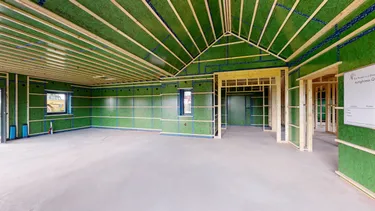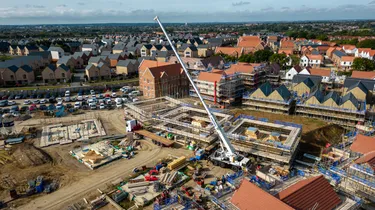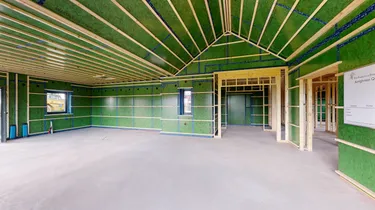
Ensuring airtightness is rapidly becoming a key objective for the construction industry, which is being driven by a number of factors including the protection of a building’s structure, thermal comfort for the occupants – and perhaps most importantly of all – energy efficiency. At MEDITE SMARTPLY, we have two products that can help ensure the airtightness of a building, whether it’s a residential or commercial property.
Demands for airtightness
It’s fast approaching 2025, and compliance with the Future Homes Standard (FHS) will become mandatory. The goal of FHS is to ensure that new homes built from 2025 onwards will produce 75-80% less carbon emissions than homes constructed under the current Building Regulations.
The Government has already updated Part F and Part L of the current Building Regulations, which came into effect in June 2022. Part F refers to new standards of ventilation and Part L highlights the airtightness requirements, minimum energy performance targets for buildings and improved minimum insulation standards required for new builds, renovations, and extensions. With all these changes coming to play, the drive towards more sustainable building cannot be ignored. One way to improve energy efficiency, is to ensure buildings are airtight.
How can MEDITE SMARTPLY help?
To help meet demands, MEDITE SMARTPLY offers two environmentally conscious airtight products that are suited for traditional and modern methods of construction (MMC). Firstly, SMARTPLY AIRTIGHT, a structural OSB/3 panel with integrated air barrier and vapour control properties. The other, SMARTPLY SURE STEP, an airtight, tongue and groove OSB/3 panel with a high-performance and durable coating.
SMARTPLY AIRTIGHT can be used for the walls and ceilings. The panel is airtight and is designed for use as internal structural sheathing on the warm side of the insulation in timber frame construction systems. AIRTIGHT is certified as an airtight component by the Passive House Institute and therefore contributes to comply with the air permeability requirements set out by the Passive House Institute.
For flooring and roofing, there is SMARTPLY SURE STEP. Using SURE STEP as an airtight layer for flooring or decking can contribute to sustainable building practices as well as reduce the energy consumption for heating. Its unique coating also brings improved durability during the construction phase and slip resistance to the panel in all site conditions. SURE STEP is certified airtight by the Passive House Institute.
You can use AIRTIGHT and SURE STEP together to form an airtight, opaque envelope in buildings, which forms a fundamental part of the design of airtight structures.
Why is ventilation important in airtight buildings?
Airtightness is particularly important in the design of energy-efficient homes for reasons such as reducing heat loss, protecting the building the fabric from moisture in the air and reducing air leakages (uncontrolled ventilation). However, it’s important that airtight structures have a proper controlled ventilation system in place. This is why:
It is estimated that people spend around 80-90% of their time indoors, and so without proper ventilation, airtight structures can have poor indoor air quality. It can also lead to condensation on windows and exterior walls, and potentially result in mould and mildew .
Controlled ventilation with heat recovery (MVHR) is installed to stop this and is a requirement in Passive House buildings. This involves extracting hot air from wet rooms and supplying fresh air to living and bedrooms. The fresh air is filtered and is heated by the extracted air through a heat exchanger. In very cold climate, the fresh air can be heated through ground or air heat pumps.
SMARTPLY AIRTIGHT has a distinctive green coating which offers consistent vapour resistance over the entire surface eliminating the need for additional Air and Vapour Control Layout (AVCL) membranes. The vapour control layer helps to prevent the transfer of vapour through materials by humidity or temperature differences through a process known as ‘vapour diffusion.’ Essentially, stopping air and moisture from escaping outside. This is especially important when it comes to timber frame constructions, as vapour transferring trough the fabric could condensate and cause long term damages to the timber frame structure.
Airtightness plays a pivotal role in energy-efficient homes. MEDITE SMARTPLY offers innovative airtight products like SMARTPLY AIRTIGHT and SMARTPLY SURE STEP, which not only enhance airtightness but also contribute to sustainable building practices.
Want to know more about our products? Check out our SMARTPLY range.





